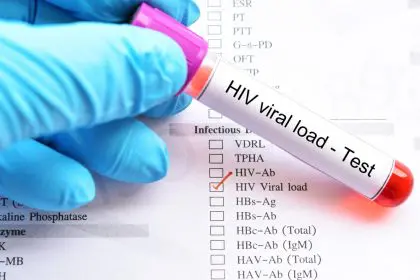As temperatures begin to warm across the United States, millions of Americans are bracing for what research indicates will be increasingly lengthy and severe allergy seasons. Scientific evidence points to a troubling trend: allergy seasons are starting earlier, lasting longer, and producing substantially more pollen than just three decades ago, creating unprecedented challenges for the nearly 26% of American adults who suffer from seasonal allergies.
The expanding allergy calendar
Growing seasons, the periods when environmental conditions support plant growth, now begin earlier and extend longer than they did just 30 years ago, according to comprehensive data from the Allergy and Asthma Foundation of America. This expansion has direct consequences for allergy sufferers nationwide.
The average allergy season has extended approximately 13 days compared to measurements from two decades ago, reflecting a significant change in the seasonal patterns that have historically governed pollen production. Research from the University of Michigan projects even more dramatic shifts by century’s end, with pollen emissions potentially beginning up to 40 days earlier in spring than occurred between 1995 and 2014.
This extension creates an additional burden for allergy sufferers, who must now manage symptoms for nearly two additional weeks each year. The prolonged exposure increases the risk of developing more severe allergic responses and complications for those with asthma or other respiratory conditions.
Rising pollen concentrations
Beyond the lengthening seasons, pollen concentrations have increased dramatically, up to 21% across North America over the last three decades according to data from the USA National Phenology Network. This increase means not only are allergy seasons longer, but each day within those seasons potentially carries a higher pollen load.
The concentration increase compounds the challenge for allergy sufferers, as higher pollen counts typically correlate with more severe symptoms. For the approximately 19% of American children who experience seasonal allergies, these increases may have particularly significant impacts on school attendance, outdoor activities, and overall quality of life.
Climate change as the driving force
Allergists and environmental scientists point to climate change as the primary factor behind these concerning trends. Human-caused climate change has measurably worsened North American pollen seasons, causing them to lengthen by 20 days on average between 1990 and 2018.
The warming planet produces multiple effects that enhance pollen production and distribution:
Delayed first frost. Warming temperatures extend the time before the first frost occurs in fall, which typically forces pollen underground. This extension allows pollen to remain airborne for additional weeks.
Increased storm activity. Climate change correlates with more frequent and intense storm systems, which efficiently distribute pollen across much greater distances.
Enhanced pollen potency. Research indicates that pollen produced under these changing conditions may actually become more allergenic, penetrating deeper into respiratory systems.
The connection between greenhouse gas emissions and allergies presents another concerning dimension. Increased carbon dioxide levels from fossil fuel combustion directly stimulate plant growth and pollen production. Studies have established a clear correlation between atmospheric carbon dioxide concentrations and ragweed pollen production, demonstrating how human activity directly influences allergy severity.
The immune system response
Seasonal allergies, medically known as allergic rhinitis, occur when the immune system misidentifies pollen as a threatening substance and initiates a protective response. This reaction triggers the release of chemicals including histamine, which produces the characteristic symptoms of seasonal allergies.
The immune system’s overreaction manifests as nasal congestion, sneezing, runny nose, and itchy, watery eyes, symptoms that range from mildly annoying to severely debilitating for some sufferers. In extreme cases, allergic reactions can progress to anaphylactic shock, a potentially life-threatening condition affecting multiple organ systems.
As pollen seasons intensify and extend, medical professionals anticipate an increase in both the number of people experiencing seasonal allergies and the severity of symptoms among existing allergy sufferers. The cumulative effect of longer exposure to higher pollen concentrations may push previously mild cases into more severe categories.
Geographic variations in impact
While the trend toward longer and more severe allergy seasons affects the entire continent, the specific impacts vary significantly by region. Areas experiencing more dramatic warming effects may see more pronounced changes in their local allergy patterns.
The northeastern United States typically experiences tree pollen in spring, grass pollen in summer, and weed pollen, particularly ragweed, in fall. However, these distinct seasons have begun to overlap more frequently, creating periods when multiple pollen types circulate simultaneously, potentially triggering more complex allergic responses.
Managing intensifying allergies
As environmental conditions continue to worsen allergy seasons, medical professionals recommend increasingly proactive approaches to symptom management. Preventive strategies and early intervention have become essential components of effective allergy care.
Medication timing. Allergists now recommend beginning medication regimens several weeks before anticipated allergy seasons to allow treatments to reach full effectiveness before symptoms begin.
Creating pollen-free zones. Preventive measures include keeping windows closed during early morning hours when pollen counts peak, using air conditioning with high-quality filters, separating indoor and outdoor clothing, and showering to remove pollen from skin and hair.
Tailored treatments. Different medications address specific symptoms, with 24-hour antihistamines providing longer relief with fewer side effects than older formulations. Nasal steroids, antihistamine sprays, and specialized eye drops target particular symptom profiles.
Long-term solutions. For those seeking more permanent relief, allergen immunotherapy through allergy shots can reduce sensitivity over time, potentially decreasing dependence on daily medications.
The bedroom represents a particularly important environment for allergy sufferers, as creating a pollen-free sleeping space allows the immune system several hours of rest from constant allergic reactions, potentially reducing overall symptom severity.
Future projections
Environmental scientists project that without significant intervention to address climate change, allergy seasons will continue to lengthen and intensify. The University of Michigan research suggests that by 2100, high pollen count days could increase by 19 days annually compared to the 1995-2014 baseline.
These projections indicate that allergy management will become an increasingly important public health concern. The economic impact of extended allergy seasons encompasses not only direct medical costs but also decreased productivity, increased absenteeism, and reduced quality of life for a substantial percentage of the population.
The connection between climate policy and public health becomes particularly evident when considering these trends. Measures that reduce carbon emissions and slow warming may indirectly benefit millions of allergy sufferers by moderating the factors driving longer and more severe pollen seasons.
As researchers continue to monitor these environmental shifts, the message for allergy sufferers becomes increasingly clear: preparation, prevention, and professional guidance will be essential tools for navigating the changing landscape of seasonal allergies in a warming world.















